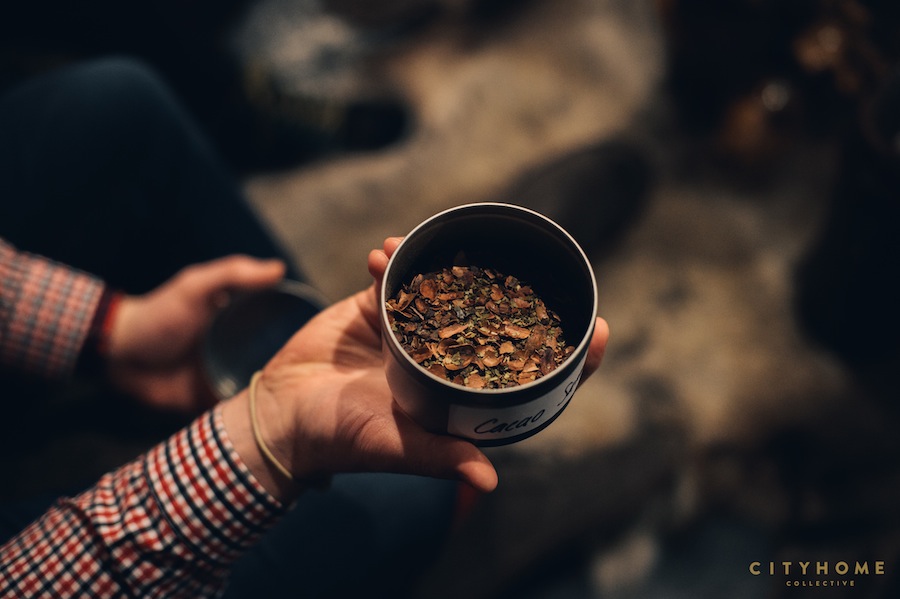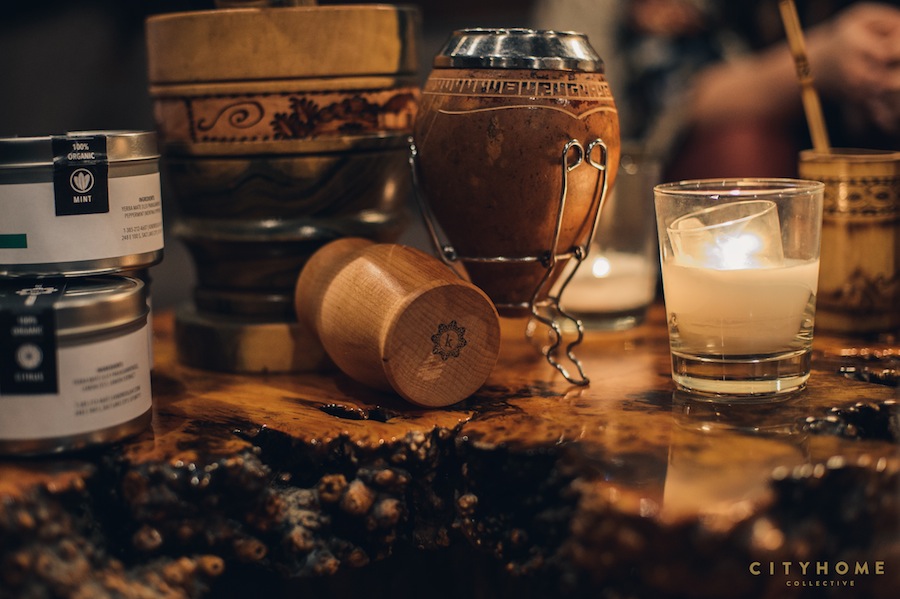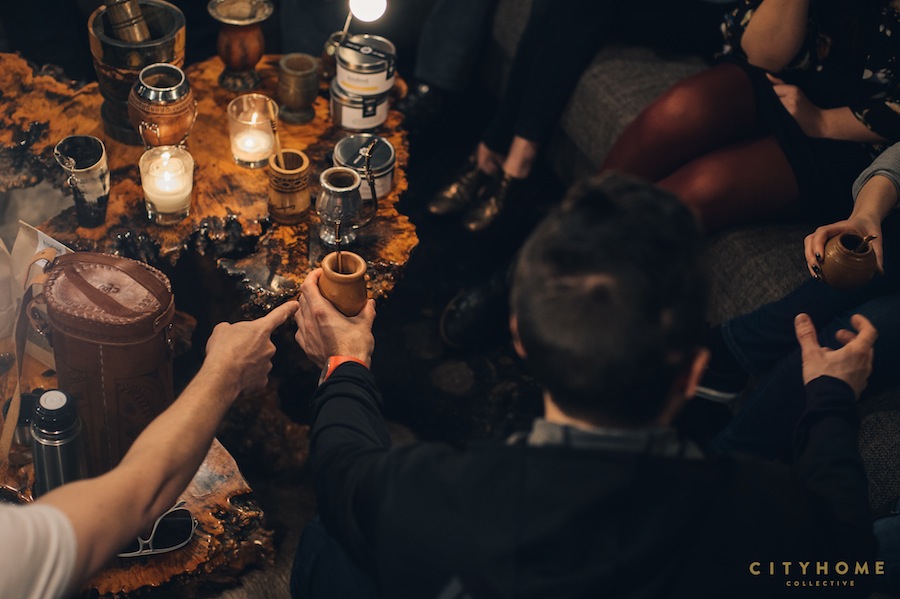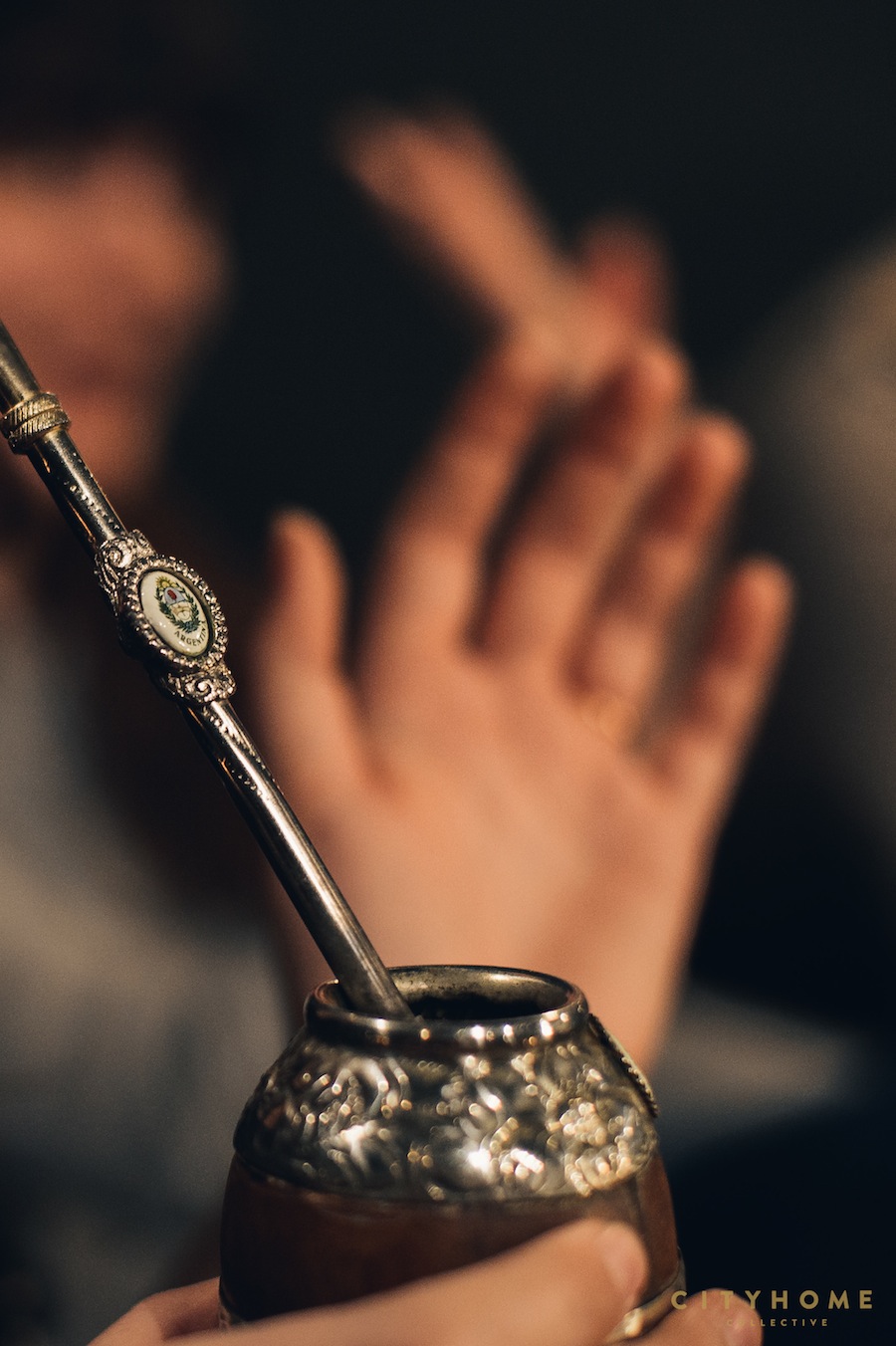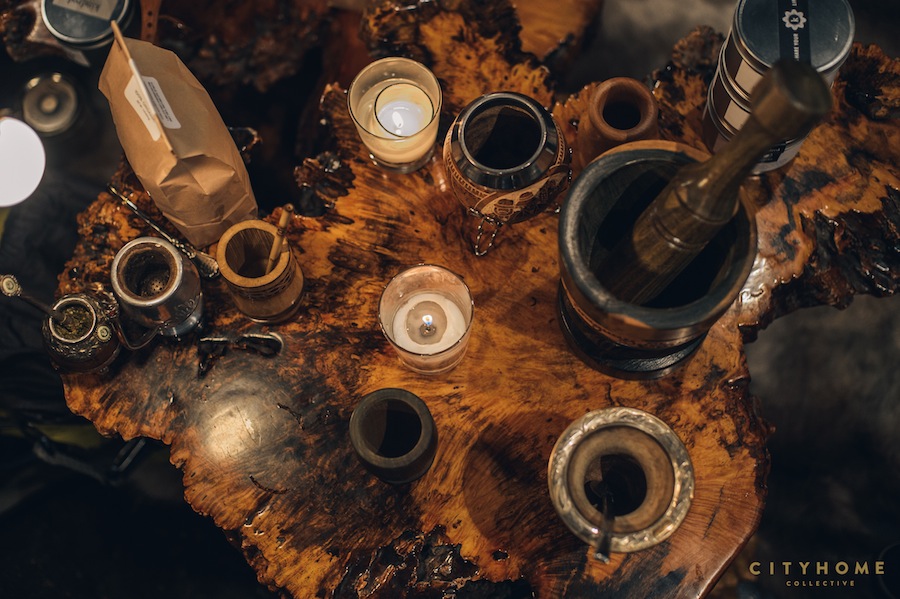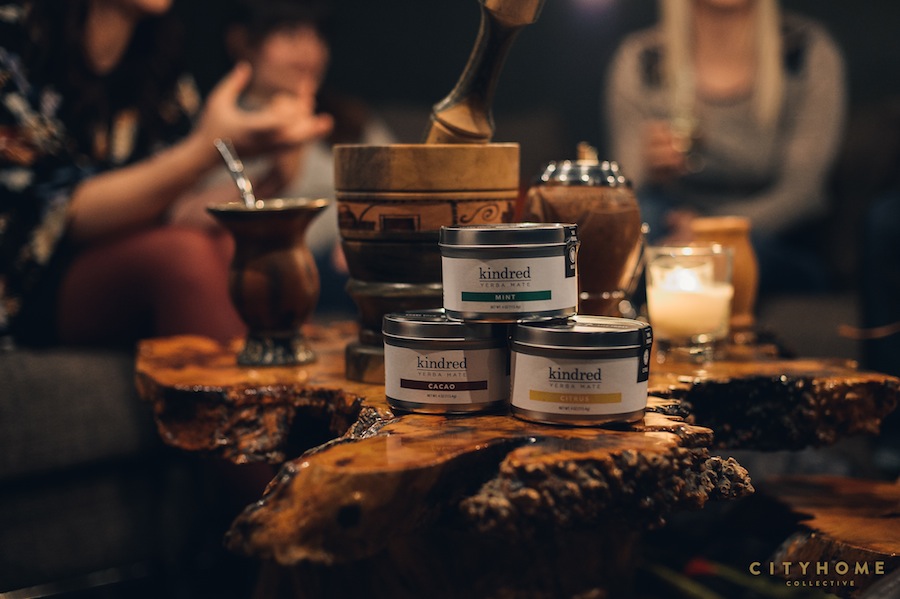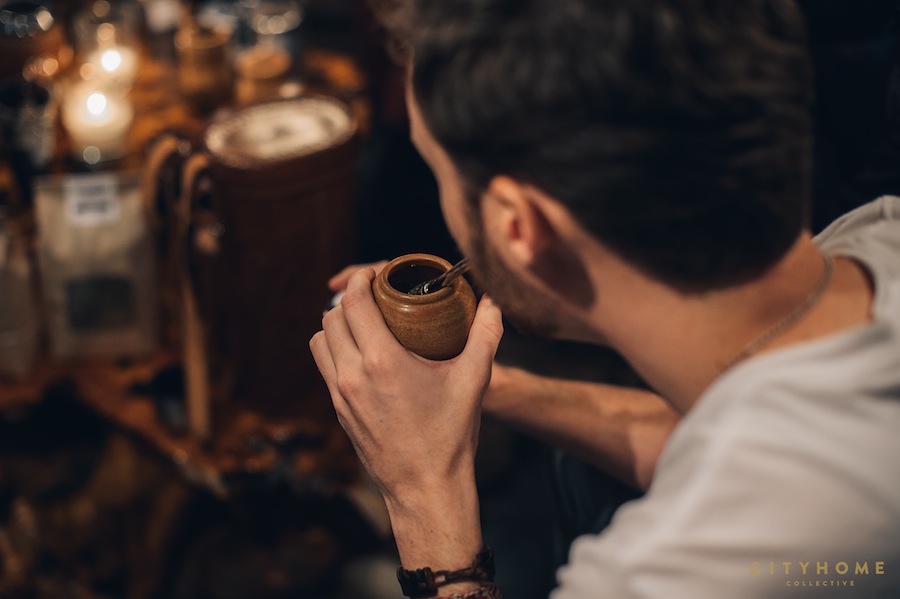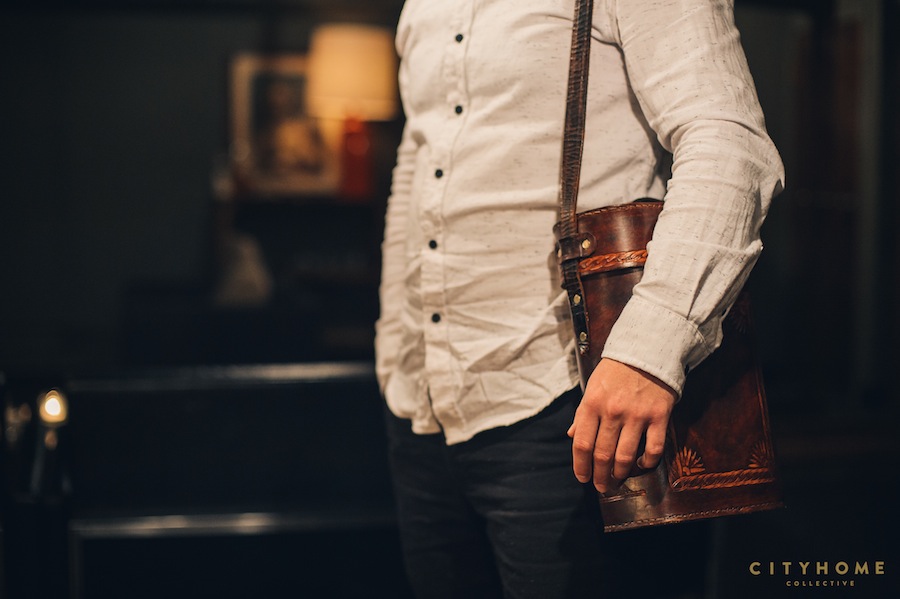In this age of social media most of us find it difficult to partake in the age-old act of real, actual face-to-face interaction [go down to your local coffee shop and all you see is a bunch of young Joes on their lappies, sipping on a delight of their choosing, and keeping relatively mum]. What we are missing is the social interaction that once brought all of us together; the interaction that at one time drew us down to the local coffee shop--not just for the WiFi or the caffeine boost, but for a break from the daily grind and a chance to share memories and thoughts with our peers, locals, and loved ones.
Enter Kindred: [/ˈkindrəd/ noun: one's family and relations]. The co. was was founded upon the belief that one product, yerba mate, could bring us all back together. Founders Mac Galeano and Adam Bullough--both influenced with the culture of South America--brought the strong South American tradition of drinking yerba mate to Salt Lake City, Utah in the hopes of doing just that. We are not only COLLECTIVELY keen on their social impact in SLC, but also on the clean design of their website and branding [insert oooohs and aaahs here]. Mac, full-time mate lover as well as graphic designer, worked his magic in making Kindred stand out [besides being a delicious drink that brings peeps together]. The ultra-simple, fresh design has us hoarding their adorable little tins all over the damn place.
Yerba mate is not your typical tea drink [light-years away from Snapple]. Although commonly mistaken for a tea, yerba mate is actually made from the dried leaves of the Ilex paraguariensis bush, which is indigenous to Argentina, Brazil, Paraguay, and Uruguay. Yerba mate is not only super nutritional, energizing, and rejuvenating, but it is actually known in its native lands to bring even the loneliest of strangers together. Rooted strongly in tradition, yerba mate is typically drunk in what is known as a “yerba mate circle”. In this powwow, one is meant to share a cup of yerba mate with a group along with ideas, thoughts, and interests. Can you imagine what could get done in this salty city if we all sat down and hashed it out in a yerba mate circle on the daily? Shit tons. We sat down with the founders of Kindred to get the inside scoop on the cultural norms of drinking yerba mate. Salt Lakers, we could learn a thing or two…
The tradition of drinking yerba mate in South America has been a staple since indigenous times. Lay down the benefits of drinking it: Some of the direct health benefits are the 24 vitamins and minerals it gives you, along with a high content of antioxidants--more antioxidants than green tea, in fact. It has moderate to low caffeine levels that help some folks stay alert, and it is somewhat euphoric in the way I have heard people describe chocolate--it just makes you happy. In South America it is used to aid weight loss, and they often add other medicinal herbs to the yerba mate in Paraguay.
What does it mean to be invited to drink yerba mate? When you’re invited to a mate circle it’s a sign of friendship and acceptance. South Americans are known for their hospitality and mate embodies that hospitality. You could be a complete stranger, but if you stop to talk to someone, or just say hi, they’ll invite you to drink with them. Not only to drink this healthy, nutrient-rich herb, but to talk to you. They want to get to know you and make a meaningful connection.
And a yerba mate circle? What is that, exactly? In Argentina, Uruguay, Paraguay and Southern Brazil--areas that drink a lot of yerba mate--it is common to see groups of friends and neighbors gathered together drinking mate. The custom is to share a cup or gourd between a group and so they will often sit in a circle while they wait their turn. This also provides a great opportunity to chat about the weather, politics, and soccer, of course.
Tell us about the role of a cebador? The cebador is the person pouring the mate. They are responsible for distributing the mate within the circle. Sometimes this falls to the youngest member who is taught to serve his or her elders. They will fill the gourd with yerba mate leaves and prepare the water. They take the first drink or two. When the mate is ready, they fill up the gourd and hand it to the next person in the circle. That person keeps it until they drain the gourd and then they pass it back to the cebador. The cebador refills the gourd and passes it to the next in line and so on around the circle.
Partaking of yerba mate deserves some serious respect. Should first-time drinkers be made aware of any mate etiquette? There are socially acceptable ways to drink yerba mate. If you accidentally perform a faux pas in South America, they’ll just laugh and show you the correct way. The biggest one is don’t grab the straw. It’s considered rude to grab the straw, called the bombilla. Don’t grab the bombilla or stir the mate. This will actually clog or fill the straw with leaves. When you’re handed the mate, you are supposed to drink the entire cup before you hand it back. And you don’t say thank you, or gracias, until you don’t want any more. If you say gracias when you hand the mate back to the cebador, you won’t get it back the next round.
Yerba Mate is consumed differently than most leaves out there. Tell us about the gourd and bombilla and their role in the mate-drinking experience. Loose leaf is poured into the cup or gourd. I have found that about 1/4 cup or 1/2 an ounce does the trick. This will give you around 4 cups of tea. Next, the straw or bombilla is placed into the leaves. The bombilla has a strainer at the bottom that will let water through but not the leaves. When you pour the water in the gourd, the leaves brew right there in the gourd and you can start sipping right away. You’ll be able to pour and refill the gourd with about 4 cups or until the leaves run out of flavor. When the leaves have finished steeping they will no longer float. That’s the sign that it’s time to change the yerba or call it quits.
Tell us about your favorite ways to prepare this delicious connector of people: My all time favorite is cold mate, or tereré. During the summer when it’s really hot outside, tereré is the most refreshing way to beat the heat and cool off. A pitcher of ice water will work, but you can add some mint leaves or lemonade to add a little more flavor.
What do you thing the social impact will be of bringing this tradition to Salt Lake City? Connecting with others has become a completely virtual, impersonal interaction. Every social application let’s you “connect” with others by pushing a button, whereas yerba mate is very personal. It’s face-to-face, verbal interaction. You are literally sharing life-giving nutrients with others and you have the opportunity to connect with people in a more meaningful way. Yerba mate can enrich your life in a way that today’s online world cannot.
Which of your products are sourced locally? Yerba mate only grows in a specific region of South America, so we have to import the loose leaf. But once it’s here, we mix it ourselves by hand and we try to use local suppliers for our additional flavors, whenever possible. Our wood gourds are made locally and our new cacao comes from a partnership with Tikal chocolates. Local sourcing gets more people involved. It's good for everyone.
Still perplexed by this new idea? Maybe afraid to try on your own? Fear not. Here's a brief Beginner's Guide to Mate: 1) Go down to your local Nostalgia coffee shop. 2) Order a yerba mate latte [aka the jam]. 3) Drink it [preferably with friends--no handheld mobile devices in sight]. 4) If you like it, take home some loose leaves, pick up a bombilla [special yerba mate straw] and gourd and try whippin' it up yourself with help from the easy-peasy steps below...
Time to Make the Mate! To prepare some traditional yerba mate, fill a gourd or cup with .5 oz of loose yerba mate leaves. Shake the gourd gently to filter out dusty leaves, if desired, and place the filtered end of the bombilla into the gourd and leaves. Next, fill the gourd with cool water and allow the leaves to soak for several minutes. This prevents them from being burned or damaged upon exposure to hot water. Once the leaves have soaked, they are ready to steep in cold or hot water. Note: when yerba mate is served with hot water, it is commonly referred to as "mate." In certain areas, however [like Paraguay], cold yerba mate is very popular, and is called tereré. It is also common to add other herbs to the leaves or water.

